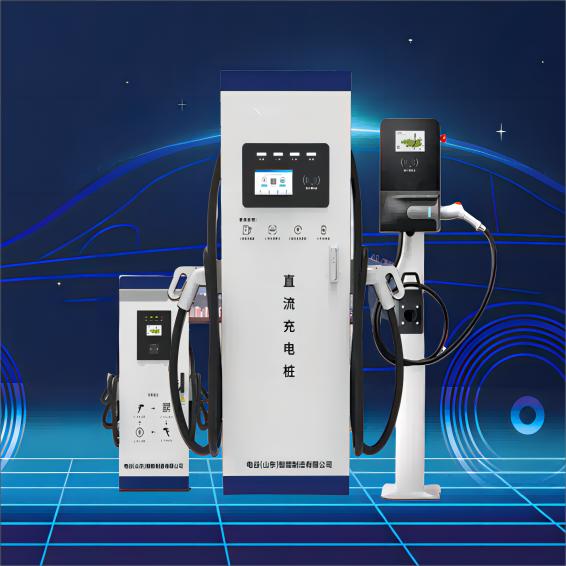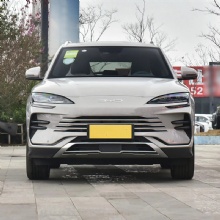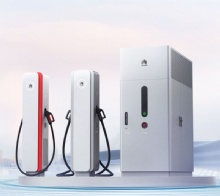Author:AlanDate:2024-1-4

Regarding the situation and development of the charging pile industry. The country’s strategic demands for the new energy vehicle industry are very clear, and the policy on charging piles supporting new energy vehicles is also very firm. The guidelines for the development of electric vehicle charging infrastructure put forward clear construction goals for each site: build more than 3,850 bus charging stations. Battery swapping stations, 2,500 taxi charging and swapping stations, 2,450 special vehicle charging stations for sanitation and logistics; in residential areas, more than 2.8 million user-specific charging piles have been built, and qualified facilities are encouraged to be open to the public; in public institutions, More than 1.5 million user-specific charging piles have been built in internal parking lots of enterprises, institutions, office buildings, and industrial parks.
1. Construction goals and charging pile costs
The average cost of an ordinary pile is between 5,000 and 20,000 yuan, and the cost of a fast-charging pile generally exceeds 100,000 yuan. Among the 5 million charging piles, there are 4.5 million slow charging piles, with an average cost of more than 10,000 per unit, a market of 50 billion. There are 500,000 fast charging piles, with an average cost of more than 100,000 per unit, a market of 50 billion. In other words, in the five years from now to 2020, the market demand for charging pile equipment alone will exceed 100 billion. Adding operations and derived values, the theoretical market capacity will be hundreds of billions.
As far as the current market is concerned, short-term equipment manufacturers are more worthy of attention. There is no clear profit model for operations. However, it is a certain data that the equipment market has room for hundreds of billions.
2. Popular science about charging piles
What is a charging pile?
Charging piles, whose functions are similar to those of gas dispensers in gas stations, can be fixed on the ground or walls and installed in public buildings (public buildings, shopping malls, public parking lots, etc.) and residential parking lots or charging stations. They can be installed according to different voltages. Levels charge various models of electric vehicles. Charging piles can be classified into different categories:
① According to the installation method, it can be divided into: floor-standing charging pile and wall-mounted charging pile. Floor-standing charging piles are suitable for installation in parking spaces not close to the wall; wall-mounted charging piles are suitable for installation in parking spaces close to the wall.
② According to the installation location, it can be divided into: public charging piles and dedicated charging piles. Public charging piles are charging piles built in public parking lots (garages) combined with parking spaces to provide public charging services for social vehicles; special charging piles are the construction unit (enterprise)'s own parking lot (garage) and provide internal charging for the unit (enterprise). Charging piles used by people, as well as charging piles built in personal parking spaces (garages) to provide charging for private users. Charging piles are usually constructed in conjunction with parking spaces in parking lots (garages).
③ According to the number of charging interfaces, it can be divided into: one charge for one charge and multiple charge for one charge.
④ According to the charging method, it can be divided into: DC charging pile, AC charging pile and AC-DC integrated charging pile.
⑤ According to the charging speed, it can be divided into: conventional charging (slow charging) and fast charging (fast charging). Charging times vary depending on vehicle battery, ambient temperature, etc. Slow charging usually takes 5-10 hours to fully charge, fast charging can charge 80% of the battery in 20-30 minutes, and fully charge in 1 hour.
The industrial chain of charging piles is mainly divided into: equipment manufacturers and charging operators.
The charging pile equipment itself does not have a high technical content. It only needs unified standards, good compatibility, stable quality and proper construction. Competitive differences are mainly reflected in the stability of production equipment, cost control, brand reputation and bidding capabilities.
Charging operation is related to many aspects. The basic profit models of charging operations include: service fees, electricity price differences, value-added services, and upcoming national subsidies. As an emerging industry, it is also involved in the power industry controlled by the state. Service fees and electricity prices are guided by the state and cannot be freely set. There is no specific amount of subsidies. The space for value-added services and various business expansions are still being explored. So although a large number of charging piles are being rapidly constructed, the charging operation industry itself is full of uncertainties.
There are currently four construction and operation models: government-led, enterprise-led, hybrid model, and crowdfunding model.
① Government-led: invested and operated by the government. The advantage is strong promotion, but the disadvantage is high financial pressure, low operational efficiency, and may not necessarily adapt to marketization.
② Enterprise-led: invested and operated by enterprises, combined with electric vehicle sales and charging pile production. The advantage is high operational management efficiency, but the disadvantage is the lack of unified management, which may lead to disorderly competition.
③ Mixed model: The government participates in support and enterprises are responsible for construction. The advantage is that it can make the government and enterprises complement each other and promote industrial development faster, but the disadvantage is that it is greatly affected by policies.
④ Crowdfunding model: It involves the integration of government, enterprises, society and other forces. The advantage is that it can improve the utilization rate of social resources, adapt to the market, and focus on user needs. The disadvantage is that it is difficult to integrate the interests of all parties, and ultimately it still depends on policy guidance.
We can easily find that the current charging pile industry is greatly affected by national policies. The spirit and documents at the national level are relatively clear, but until local policy details are issued, we are actually unable to make quantitative analysis and judgment.
3. The future of charging piles
The future of charging piles is bright, but it will take some time to integrate and make waves. New energy vehicles will continue to grow rapidly in 2016. The substantial growth in the stock of electric vehicles is a clear positive trend. The market demand will increase, the return on investment will increase, and the enthusiasm of enterprises will also increase. How to invest more efficiently requires government guidance, industry regulations, and the joint development of upstream and downstream industries to explore newer and more effective business models. The potential space for imagination lies in:
(1). Value-added services
Including advertising on piles and cooperation with shopping mall parking lots as supporting facilities to attract consumers.
(2). Charging pile Internet+
The era of charging pile industry has arrived. The charging pile is not connected to a new energy vehicle. It can be a channel for energy monetization, or it can be an import port for energy data traffic, and it can also be the entrance to a data portal. With the blessing of the Internet, the charging pile is no longer just a pile, but an interface full of infinite possibilities, which can cooperate with time-sharing rental of electric vehicles, value-added services of electric vehicle 4S stores, electronic payment, big data, etc., and can also become The Internet of Vehicles is even an important part of the online community. Of course, the premise is that there must be sufficient scale. What Triad is currently doing is to continuously expand its scale and build a business empire based on the charging pile network.
↓Next [ Charging anytime, anywhere, electric vehicle charging stations bring infinite convenience! ]






